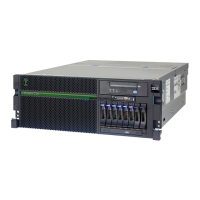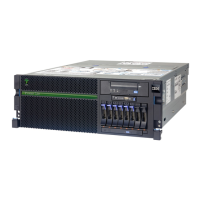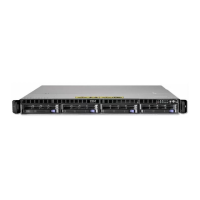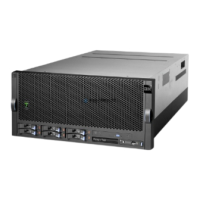SAS dual-RAID subsystem with external drives for the 8202-E4C, 8202-E4D,
8205-E6C, or 8205-E6D
This configuration increases availability by using dual-storage I/O adapter (IOA) mode or high
availability (HA) RAID mode to connect multiple adapters to a common set of internal and external disk
drives.
The following rules apply to this configuration:
v This configuration uses dual cache RAID adapters.
v Using the RAID adapters with port expanders, the two adapters connect to each other and to all eight
disk drives.
v The disk drives are required to be in RAID arrays (JBOD is not supported).
v Separate SAS cables are not required to connect the two SAS RAID adapters to each other. The
connection is contained within the backplane.
v RAID 0, 5, 6, and 10 support up to eight internal drives and the externally attached drives.
v Solid-state drives (SSDs) and hard disk drives (HDDs) can be used, but can never be mixed in the
same RAID array. An SSD-only RAID set and an HDD-only RAID set are supported. SSDs are not
supported in the externally attached disk drawer.
v The external SAS port is used for expansion to external SAS disk drawers.
v The external SAS port cannot connect to a SAS disk drawer that is populated with SSDs.
v The external SAS port cannot connect to a SAS drawer at all (even if it is populated with HDDs) if any
SSDs are used in the internal RAID configuration.
Example: SAS dual-RAID subsystem with external drives
This example provides an overview of the SAS dual-RAID subsystem configuration by using external
disk drives on the 8202-E4C, 8202-E4D, 8205-E6C, or 8205-E6D systems.
Figure 7. Disk bays controlled by both SAS adapters when using a SAS dual-RAID subsystem with internal and
external drives
SAS subsystem 11

